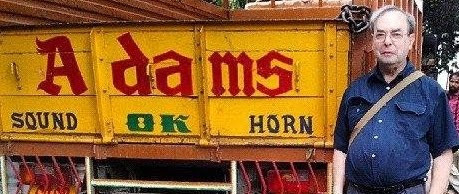-A divertissement-
I qualified as a dental surgeon at University College Dental School (London) in March 1982. I began my first job in practice soon after that. I joined a small well-run practice in Rainham (Kent), an overgrown village between Gillingham and Sittingbourne. I was about 60 miles (~96 Km) from Central London, but it felt as if it were on a different planet.
My patients were delightful on the whole, and not overly demanding. The principal dentist, Julian Unter, was helpful and never put me under any pressure. I recall once after I had been in practice for only a few weeks that a patient asked me how long I had been a dentist. Not wishing to alarm her that I had only been ‘let loose’ from dental school a few weeks earlier, yet wanting to be honest, I replied: “I have been working up in London for five years”. This, which was true because I had been studying in a dental environment for that length of time, appeared to satisfy the questioner.
There was a branch of Tesco’s supermarket in Rainham. I used to buy bits and pieces there for my lunch. Whenever I handed a chocolate bar or any other piece of dentally unsuitable confectionary, the cashiers, many of whom were patients of our practice, would then wave the chocolate or similar in the air and then shout to everyone in the shop: “Look what the dentist is eating”.
I was brought up eating Mediterranean dishes at home, and learned to cook them myself. Garlic was an essential ingredient in my cooking. I used to cook for myself in my digs in Kent. One day, I was working on an elderly lady’s teeth, when she swept my hand away, and exclaimed: “Ooh, you’ve been eating garlic, Mr Yamey.” From then on, whilst I was working in Kent – and that was for about 11 years – I desisted from eating garlic during the working week. Now, I work near Central London and few of my patients are of Anglo-Saxon origin, and almost all of them eat garlic, so my consumption of the stuff is no longer a problem.
Parsley was another of my favourite ingredients during the 1980s when I worked in Kent. When I began working there, I went into Tescos, which was almost the only food store in the village, and asked for parsley. The reply I received from the surprised store assistant was: “No dear, there’s no call for it. We only get parsley in at Christmas.” I was only 60 miles from London, where parsley was readily available throughout the year, but no one wanted it in Rainham except at Christmas. This and many other similar cultural differences made me realise how different Kent was to London and many of the exotic places that I had visited much further away from it.
READ MORE BY
ADAM YAMEY
CLICK: HERE










